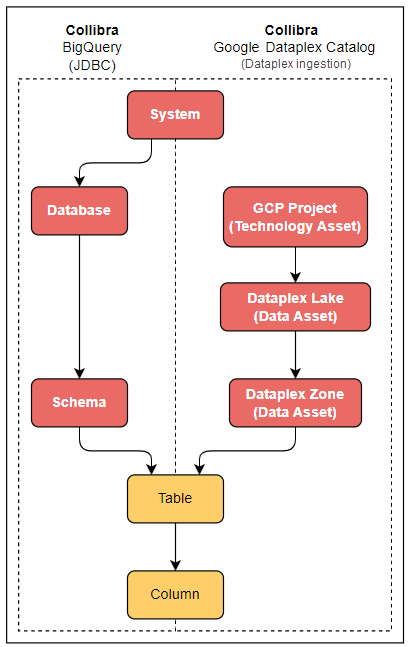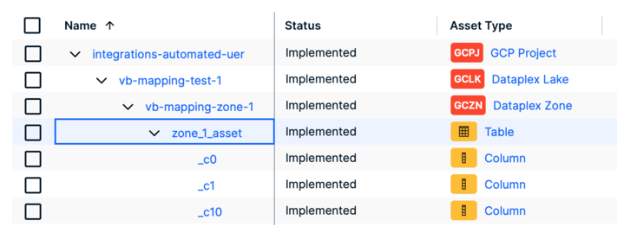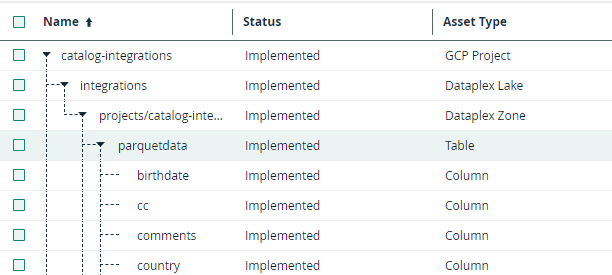In Collibra 2024.05, we launched a new user interface (UI) for Collibra Data Intelligence Platform! You can learn more about this latest UI in the UI overview.
Use the following options to see the documentation in the latest UI or in the previous, classic UI:
In Collibra Data Intelligence Platform, you can:
- Register individual Google BigQuery databases via the BigQuery JDBC driver.
- Integrate a Google Cloud Storage (GCS) file system.
- Integrate all metadata of the projects from Google Dataplex Catalog.
It's important to understand the difference between these methods because the result in Collibra is different.
| Possible way to work with GCP | Result in Collibra |
|---|---|
| Integrating Google Dataplex Catalog | Google Dataplex Catalog is a technical catalog on Google side that provides information for all the data in the various Dataplex projects. If you use the Google Dataplex Catalog integration, we will register and synchronize the GCP Projects, Dataplex Lakes, Dataplex Zones, Tables, and Columns. The Google Dataplex Catalog Synchronization will create the whole asset structure, representing Dataplex objects such as Project, Lake , Zone, Table, Column, and allows for filtering based on Lakes and Zones. |
|
The Google Cloud Storage (GCS) file system integration allows for the registration of Google Cloud Storage (GCS) as a data source in Collibra and the synchronization of the metadata. The GCS integration supports Google Dataplex, a service used for schema discovery. This allows you to integrate the schemas, tables and columns from the files and create a File Group asset in Collibra rather than multiple File assets. This GCS integration will integrate data from GCS based on the configured crawler and in addition add Tables and Columns recognized by Dataplex, which are related to files and file groups. |
|
| Register a Google BigQuery database |
If you register a specific Google BigQuery data source via the BigQuery JDBC connector, the resulting assets represent the columns and the tables in the database. |
Combining the ways of working
It is possible to combine the Google Dataplex Catalog integration and the registration of a Google BigQuery database because they result in the same technology assets. You can use the integration of Google Dataplex Catalog to quickly get an overview of all your databases in Collibra Data Intelligence Platform. Once you have a better view on the important databases, you can register them individually via the JDBC driver.

Important Use the same System asset for the integration and the registration.
| Combining the two ways of working with GCP |
|---|
|
|



